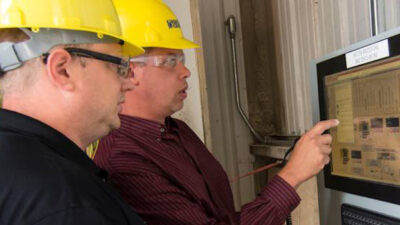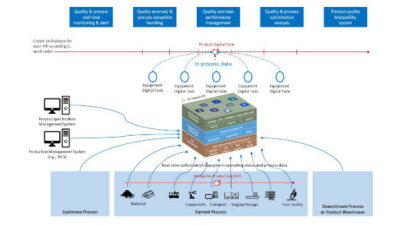Using video games that are designed to teach engineers how to act in certain safety situations can provide training and experience for plant-floor operations, which can help narrow the skills gap.

The skills gap is often thought of as younger workers not having the knowledge they need to be ready for a job because the older workers are leaving. That’s partly true, according to Samer Forzley, CEO of Simutech Multimedia in his presentation, “Digitally Developing the Next Generation of Manufacturers with Gamificiation and 3-D Simulation,” at Process Expo at McCormick Place in Chicago.
The truth is, the skills gap is a bit double-edged. Younger workers don’t have all the knowledge and skills needed, but older workers are falling behind technology advances.
“The older people are facing technology challenges because there’s a lot of automation, and they don’t know how to deal with it,” Forzley said.
Forzley highlighted four facts about the current state of manufacturing:
- 25% of skilled labor is within 2 years of retirement
- The average staff retention rate is around 80%
- Half of labor costs are health-related such as stress and accidents
- There are 2.4 million jobs unfilled, which is costing the economy $2.5 trillion.
Learning through video games
There are two very different perspectives on manufacturing and much of that, Forzley said, is tied to how they learn and apply that learning. Boomers and Gen X, he said, learned through memorization and mentoring. They had concepts and ideas drilled into their heads in school, and when they got to the manufacturing floor, they learned from an older worker’s wisdom and knowledge. That doesn’t work with Millennials and Gen Z.
These days, if a younger person has a question, they’ll use Google or YouTube to learn how something is done. It’s a different form of DIY, but valuable in its own way, Forzley said.
Video games and simulations allow people to learn through doing. Forzley showed a video example of everyday objects being programmed through electrical conduits to play games such as Super Mario Bros. by Nintendo, Pac-Man by Namco, and Dance Dance Revolution by Konami.
Forzley’s company takes the video game concept and provides engineers of all ages and skill sets a safe and practical way of learning how things work. The company’s current game is focused on electrical equipment with future plans on a game for variable frequency drives (VFDs) in 2020.
Forzley said, “When you’re going from passive to active, they learn more through retention. They retain the knowledge by practicing through simulation. They sit in a simulator and practice before going on to the real thing.”
Simutech Multimedia has developed a point-and-click game that is designed to provide a real-life simulation of what could realistically happen on a manufacturing floor. Electrical engineers act as the level designers, and they work out many different scenarios an engineer might face.
“We’ve designed an extremely immersive environment, and we have a very passionate team that really works on getting it right. They can spend hours and hours on one particular challenge,” said Dan Lawrence, director of marketing, Simutech.
With more than 400 levels for their electrical game, they have come pretty close to running the gamut of just about every possible scenario. And as the game progresses, the challenges become more layered and require the engineer to do more steps. If they make a mistake, they automatically fail and start from the beginning. However, the player receives a in-game prompt that will explain why they failed so they can do it right the next time.
While not quite the same as a “regular” video game, the basic concept of getting to the end is still there. The key difference from a game like Mario or The Legend of Zelda by Nintendo is Forzley’s game acts as an educational primer designed to give the engineer the confidence and the knowledge to be ready for most plant-floor scenarios when they’ve reached the final level and beaten the game.
Chris Vavra, production editor, Control Engineering, CFE Media & Technology, [email protected].
ONLINE extra
See additional stories about virtualization and simulation stories below.




